Trees come in many different varieties, shapes and sizes, and many of Britain’s common tree species will be easily recognisable. Purifying our air by absorbing carbon dioxide and other harmful gases, trees are vital for the health of the planet. Trees also provide a habitat and food for wildlife, creating an ecosystem where birds, insects and other creatures can live.
Learn more about British tree species and how to identify nuts and seeds with our expert guide.
1
Elm
English elm seeds, surrounded by a notched papery wing, are produced in large clusters. Elm suckers, regenerating from roots of elms killed by Dutch elm disease, are prolific seed producers, but these are rarely fertile. Wych elm seeds are larger and germinate freely if sown as soon as they are ripe.
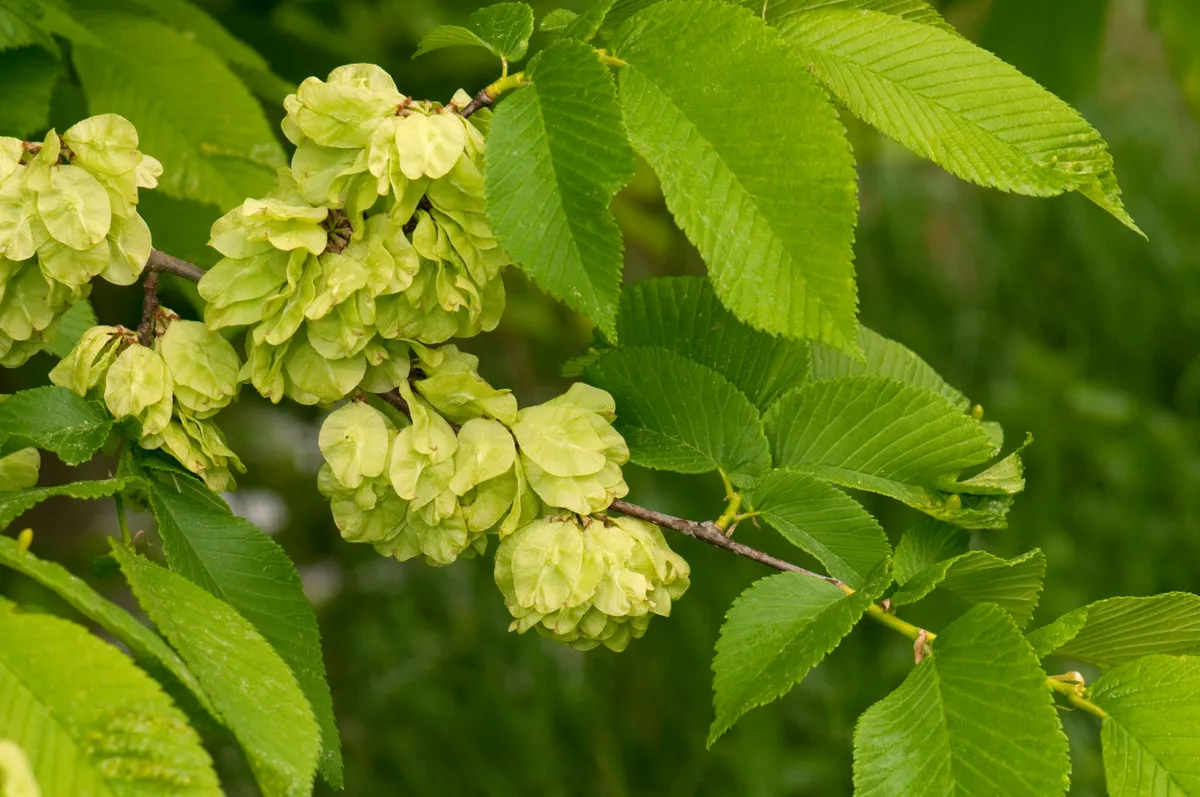
2
Sweet Chestnut
Roast chestnuts are an autumn treat, but a good summer and autumn are needed to produce a crop of large seeds, especially in the north. The husk that encloses the seeds, which are flat on one side, is pricklier than a hedgehog and best handled with gloves.

3
Oak
English oak’s acorns have long stalks, while durmast oak’s have none. If they avoid being eaten by mammals and birds, they germinate immediately, producing a root but no shoot until spring. Lucky acorns are carried away by jays, cached and forgotten, germinating beyond the shade of the parent tree canopy.
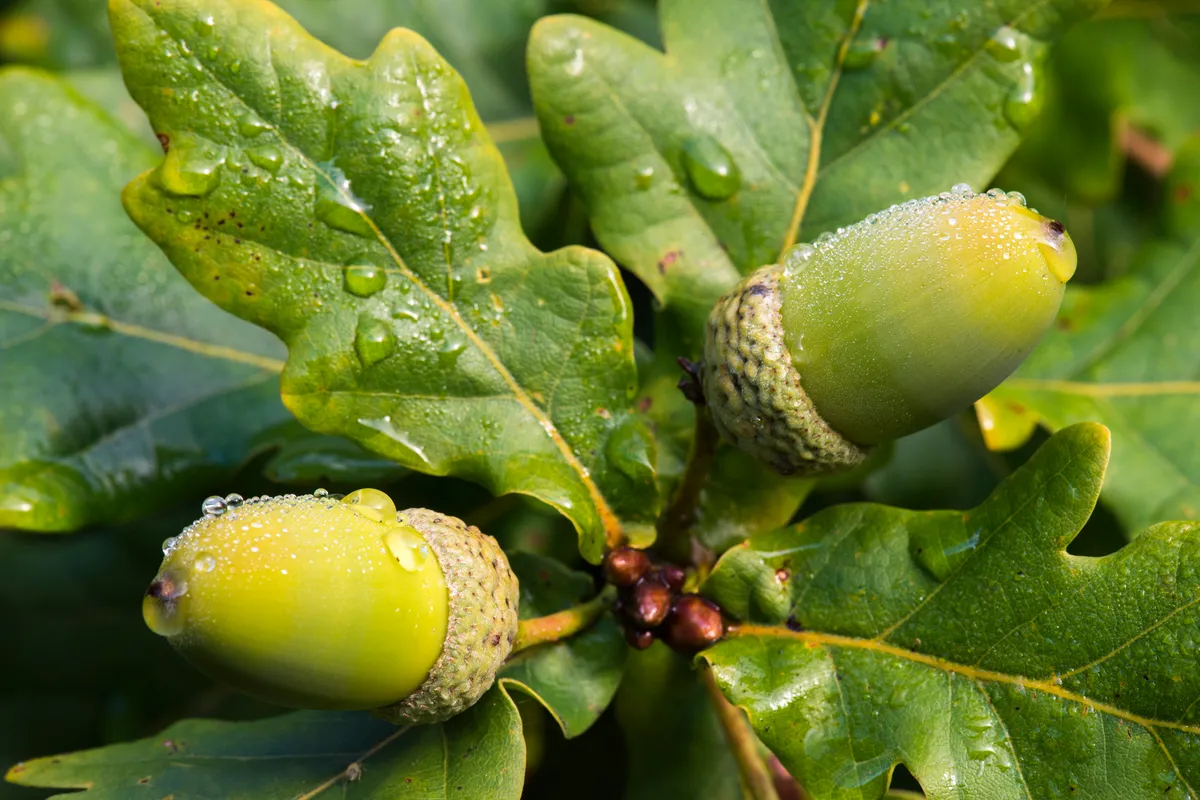
4
Sycamore
These seeds are carried in pairs, with broad-tipped wings that sweep downwards. When they separate, they spin away in the wind like a helicopter, sometimes over hundreds of metres, and germinate readily, making sycamore a rapid coloniser of open habitats. The seedlings even thrive in deep shade.
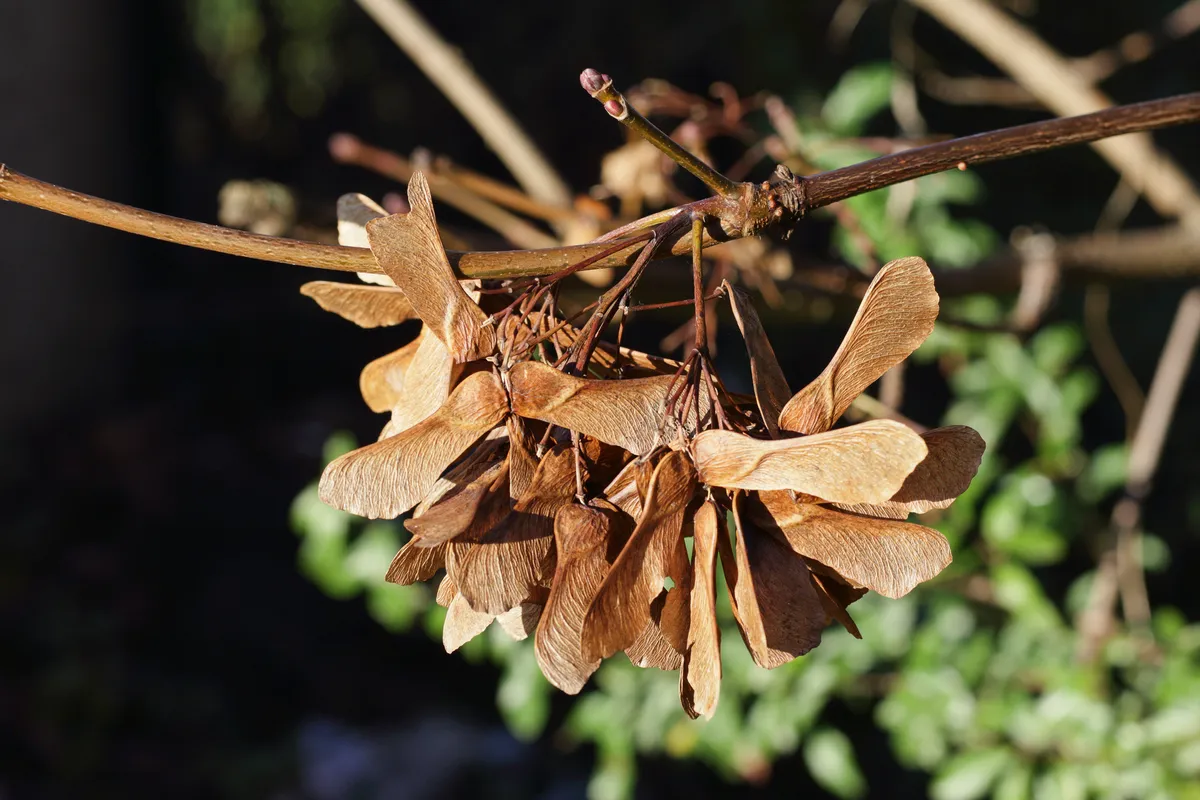
5
Silver Birch
Its large numbers of tiny seeds are arranged in brittle catkins, which shatter when flocks of siskins and redpolls feed on them in early autumn. Seedlings grow best in association with fly agaric fungus – look out for red-and-white-spotted toadstools around mature trees.
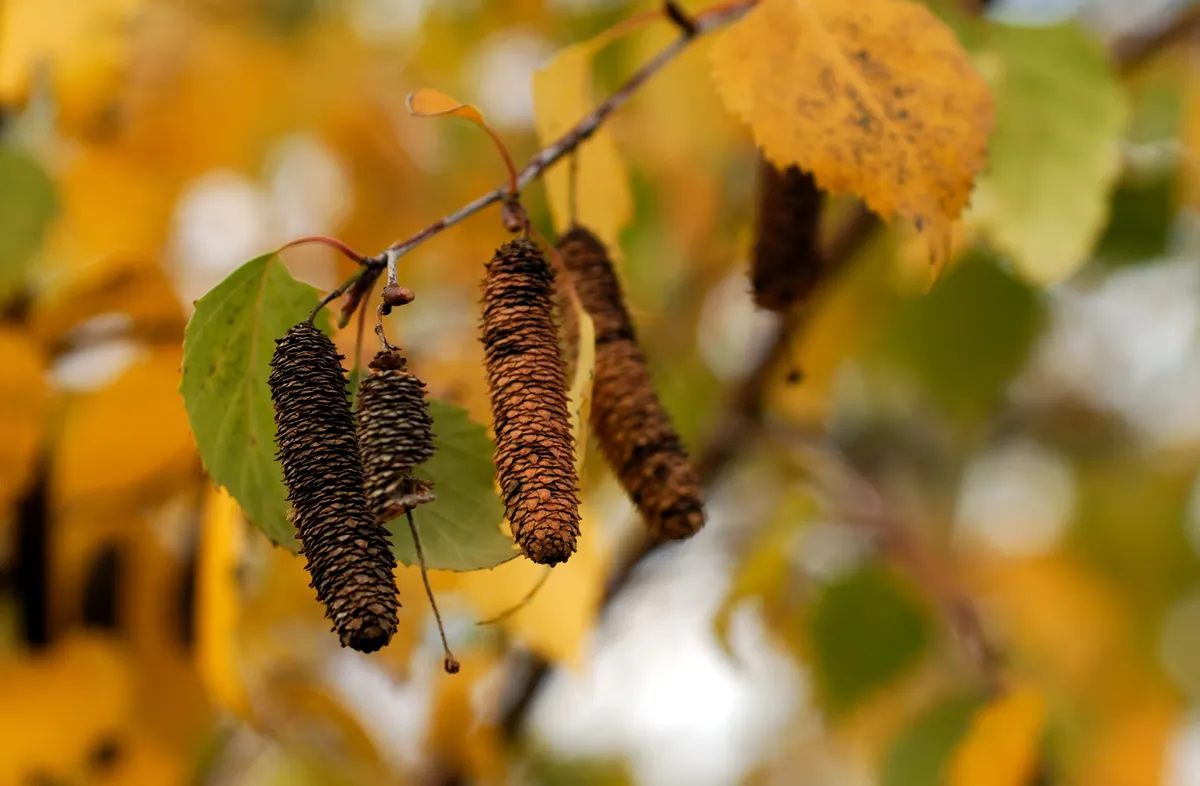
6
Hazelnut
Borne in clusters, hazelnuts have edible kernels inside hard-shells that are prized by hedgerow foragers (although small mammals often reach them first). Wood mice nibble a circular hole in the nut, squirrels split it neatly in half vertically, bank voles gnaw off the pointed end.

7
Horse Chestnut
Introduced from the Balkans in 1616, the horse chestnut’s large seeds entered folk tradition when the game of ‘conkers’ became popular in the 19th century. The prickly husks usually contain two lustrous, beautifully patterned seeds that soon dull when they dry. They germinate readily if sown when fresh.
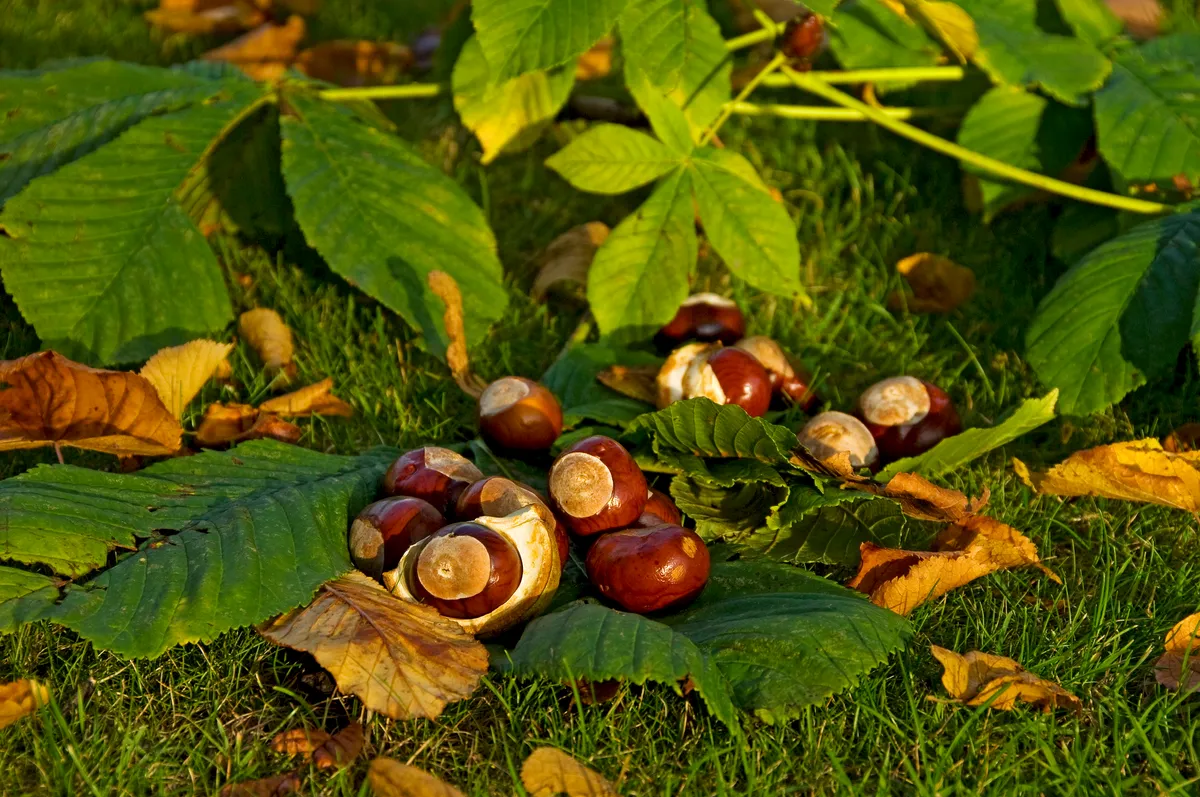
8
Walnut
The soft green outer husk produces a dye that stains fingers dark brown when handled and smells of apricots when crushed. After extraction of the kernel, the hard half-shells make excellent small boats, ideal for a superior game of ‘Pooh sticks’ in a stream.

9
Ash key
These large bunches of seeds resemble enormous bunches of keys. A few fall in autumn and germinate immediately but most remain on the tree all winter until torn off by blustery weather in March – these remain dormant in the soil for another year before they germinate.
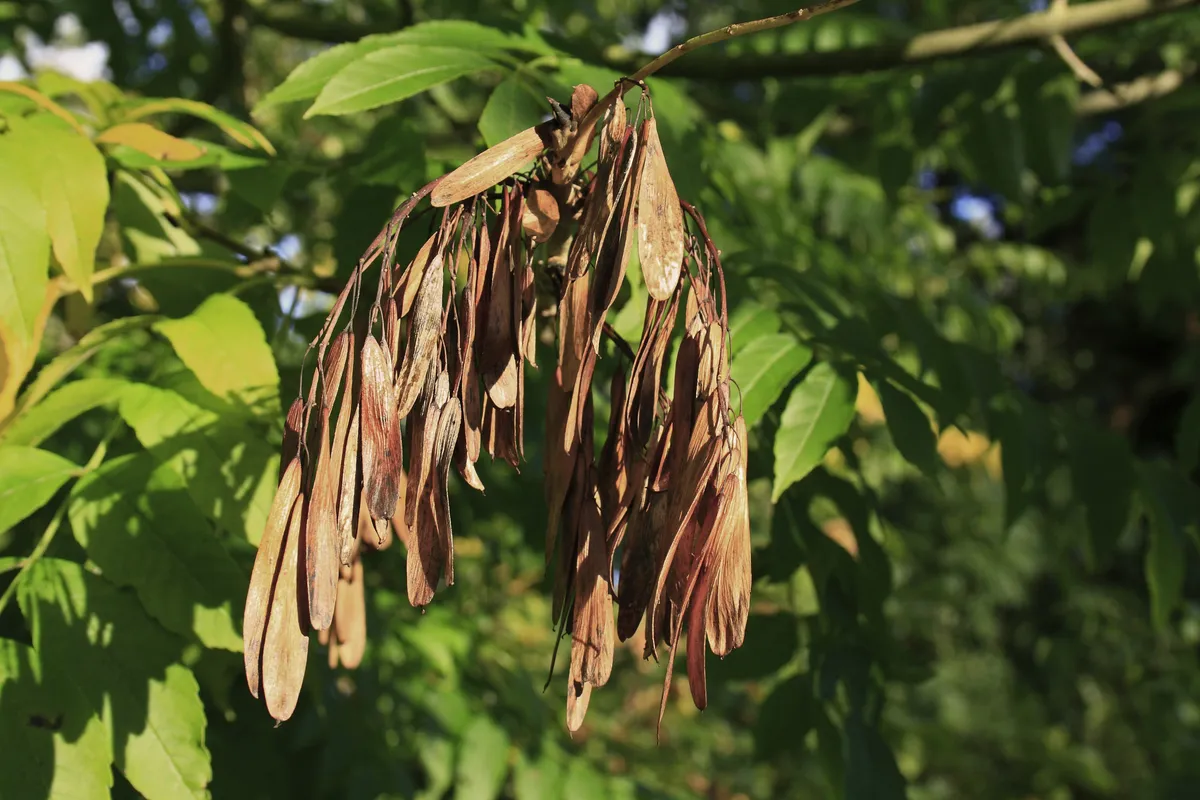
10
Alder
Alder’s small winged seeds, which ripen inside black globular cones, are important food for small finches in autumn. Alder is a riverside tree, so vast quantities of buoyant seed are carried by floodwater and washed ashore on muddy banks that provide the moist conditions needed for germination.

Beech
Seeds are shiny brown and triangular in cross section, with one or two in each prickly husk. Beech trees tend to produce an abundance of seeds in infrequent ‘mast years’, at which point large flocks of bramblings often congregate to feed on them. The seeds were once valued as ‘pannage’ to feed pigs.

